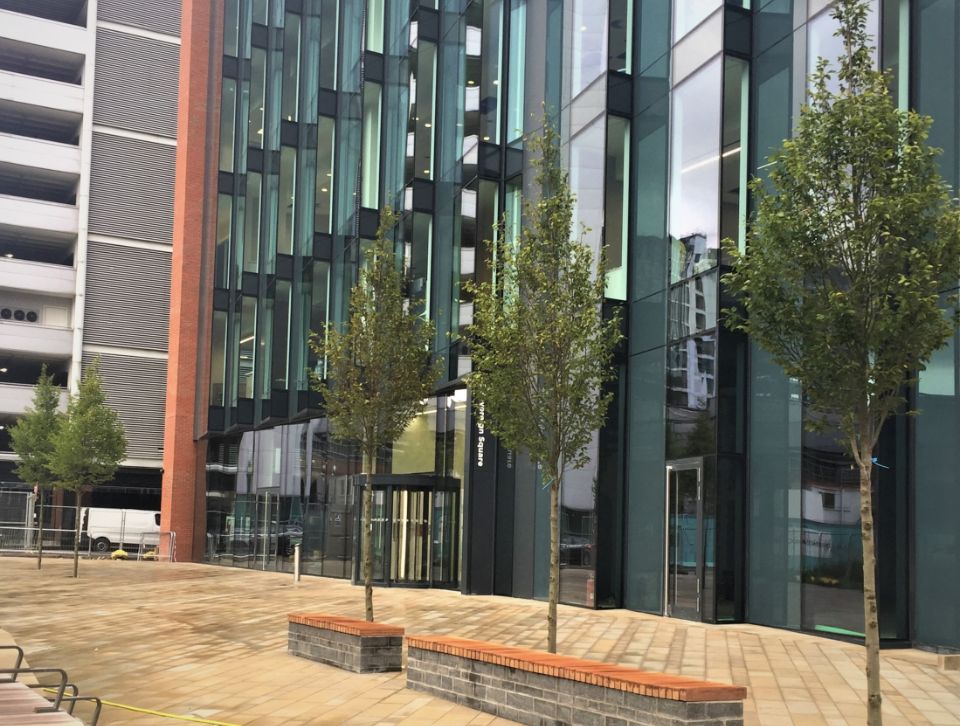The transformed Olympic Way streetscape features 48 strategically chosen trees planted in Silva Cells, which provide uncompacted soil volume and on-site stormwater management
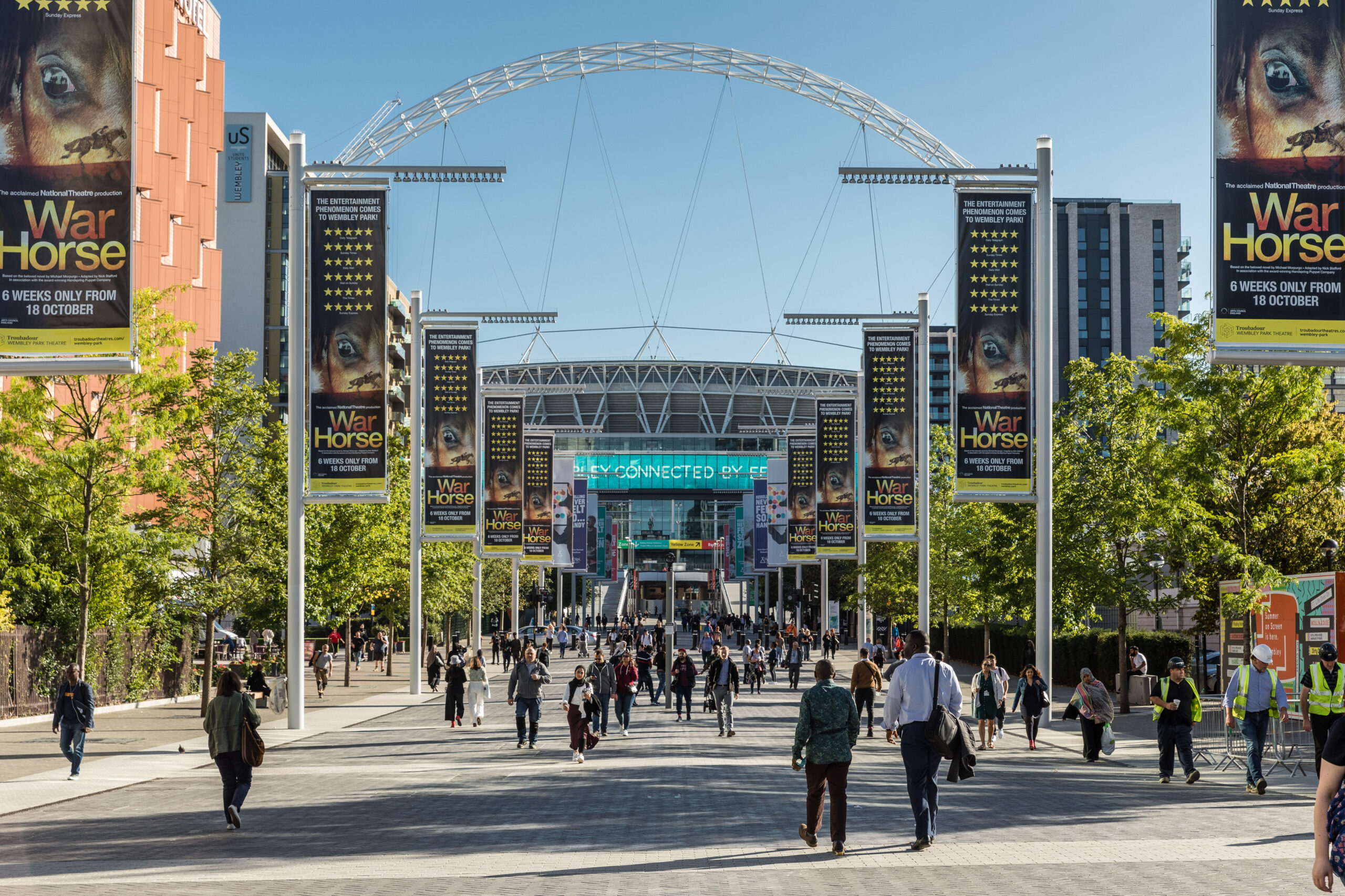
Wikimedia Commons / Chris Winter / Wembley Park
The original Wembley Stadium, opened in 1923, was a mainstay of the London suburb for decades, hosting heralded international events from the 1948 Olympic Games to the 1985 Live Aid concert series. By 2000, however, the venue was in need of crucial modernizing upgrades — the stadium was demolished and a new 90,000-capacity Wembley Stadium was inaugurated in 2007. The suburban district itself likewise underwent an overhaul (as a partnership between Gross Max, Populous, and Foster + Partners), with particular attention paid to Olympic Way: the iconic thoroughfare connecting the tube station to the stadium itself. A thoughtful green infrastructure plan was established encompassing the planting of 48 new trees, a diverse selection of species chosen from across the Northern Hemisphere. The DeepRoot Silva Cell system was specified for both its soil volume and stormwater treatment benefits, helping greenify the historic footpath for years to come.
Number of Silva Cells: 2,274 (2x)
Amount of Soil Volume Per Tree: 30 m3
Number of Trees: 48
Type of Project: Streetscape, Plaza, Stormwater
Project Developer: Quintain
Project Designer: Gross Max, Populous, and Foster + Partners
Project Contractor: VolkerFitzpatrick
Installation Date of Silva Cells: 2017-2021
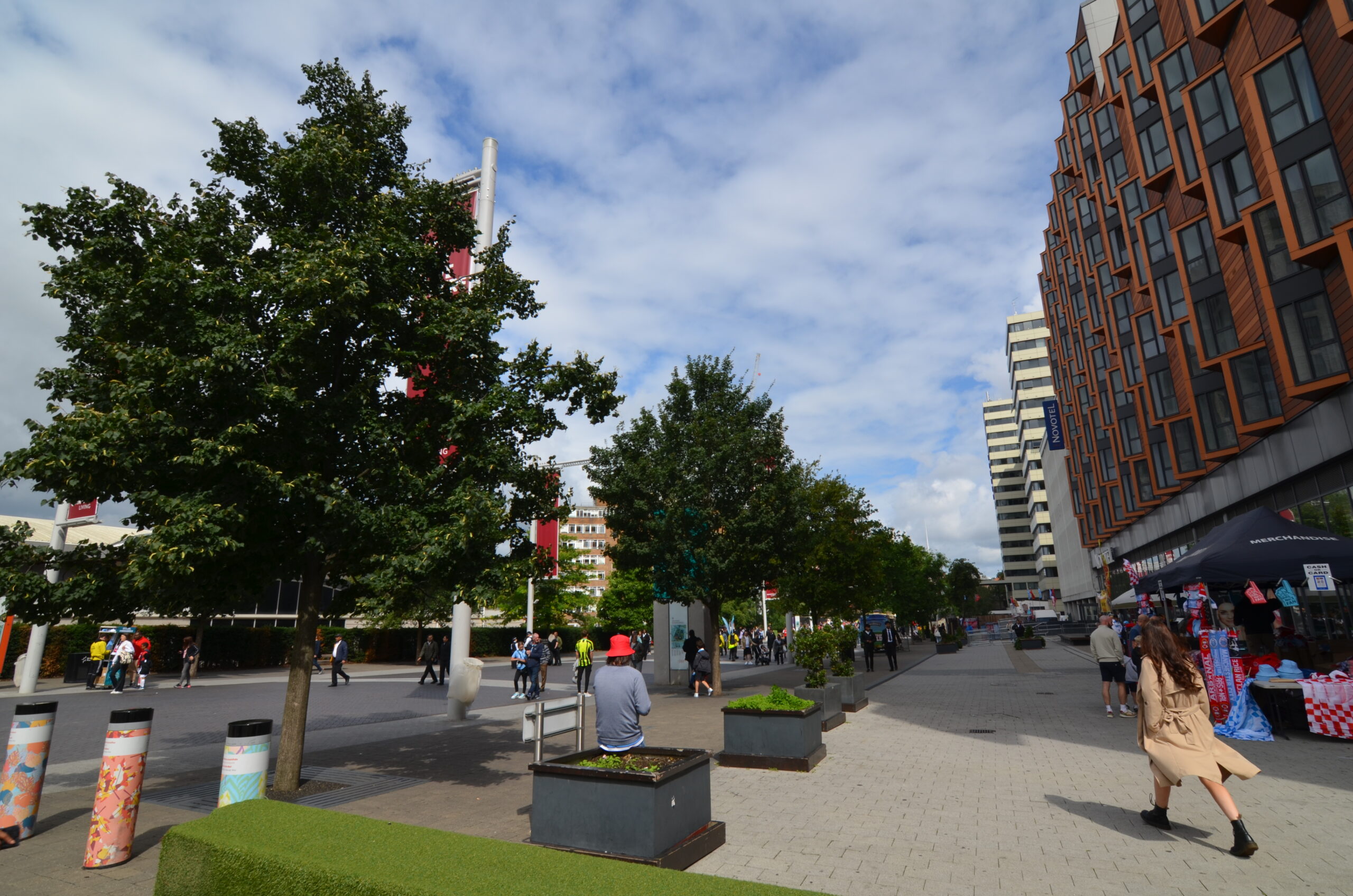
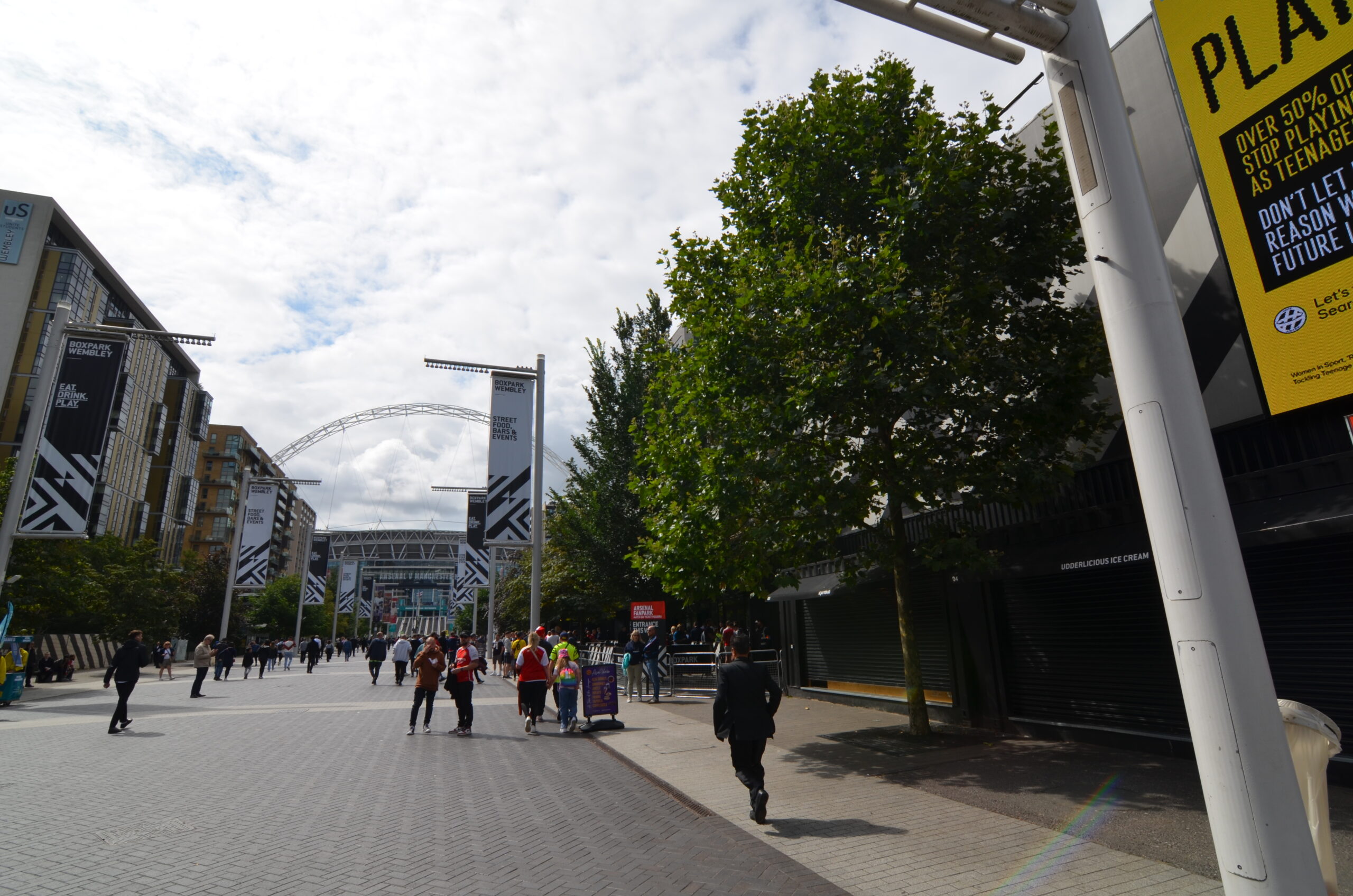
After seventy-seven years of faithful service, the original Wembley Stadium closed its doors for the last time in October 2000 — and in its place sprang its modernized successor, a 90,000-seat venue to rival the greatest event halls the world over. By 2010, it was averaging 2 million visitors per year. In tandem with the new Wembley Stadium rebuild, the surrounding district itself received an upgrade as part of a £3 billion cooperative project between Gross Max, Populous, and Foster + Partners that included 7,000 new homes, a 7-acre park, new retail and commercial facilities, and thousands of new jobs.
One of the chief priorities of this neighborhood retrofit was improving Olympic Way: the pedestrian thoroughfare from the tube station to the stadium. The street’s rich history dates back to the 1948 Olympic Games, hosted in postwar London at the original Wembley Stadium, where it served not only as a route for spectators but also as a track for marathon runners.
Green infrastructure was an essential element of the project, including 48 new trees along Olympic Way: 24 different species (each species facing its counterpart on the other side of the street) that represent the temperate zones of the Northern Hemisphere. To ensure these trees planted in the new footpath hardscape received access to adequate soil volume, the DeepRoot Silva Cell system was tasked with supporting the pavement and providing uncompacted soil volume for healthy, unimpeded root growth.
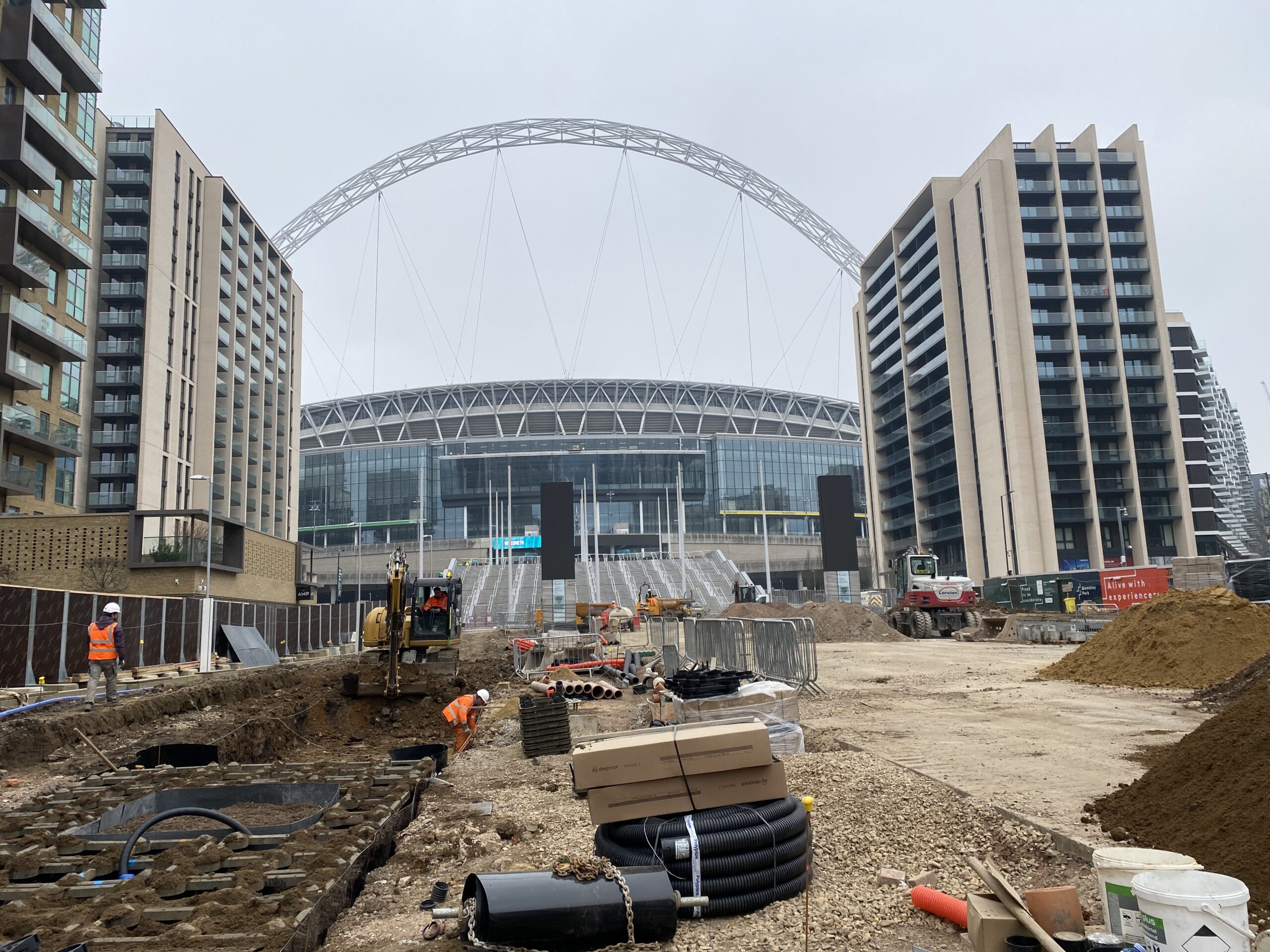
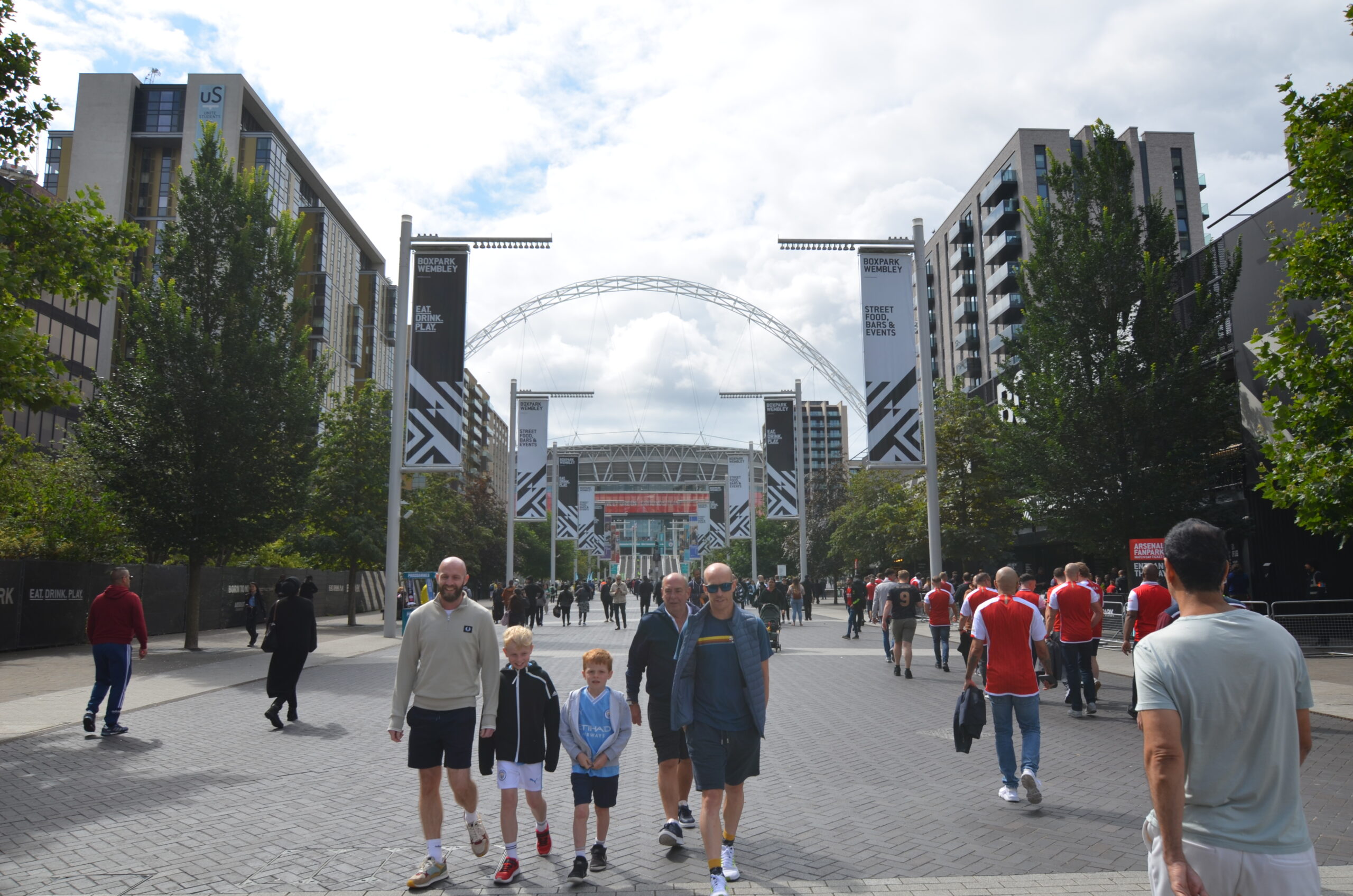
The multi-phase installation process began in 2017 with a total of 930 (2x) Silva Cells. The system provided project planners with numerous benefits, including the work-around of existing and upgraded underground utilities. Likewise, because the renovation was to be rolled out in numerous stages over a multi-year timeline, the Silva Cells were the perfect fit, as their modularity worked well with a staggered installation schedule — the system is flexible and structurally independent, allowing for in-ground placement as needed. The trees can also be planted later, as happened in the first stage of the process: the Silva Cells were installed in 2017, followed by the trees in the spring of 2018. The second installation phase, with 750 (2x) Silva Cells, commenced later in 2018 with the final stage completed in 2021 with an additional 594 (2x) Silva Cells. Each tree has access to 35 cubic meters of soil volume while sharing soil with neighboring trees, creating a continuous positive feedback loop for root growth.
Managing stormwater, along with the health and survival of trees throughout this multi-year-development process, was at the forefront of a successful project for the developer, Quintain. To manage the stormwater, a separate attenuation tank was installed down the middle of Olympic Way.
Forty-eight trees now line the streetscape, a number made possible by the removal of the iconic Wembley Stadium ramps. In its place are stairs and four lifts, ensuring every visitor continues to have access to the venue. This arrangement allowed for more space along Olympic Way, adding 12 trees to the plans and bringing the total to 48.
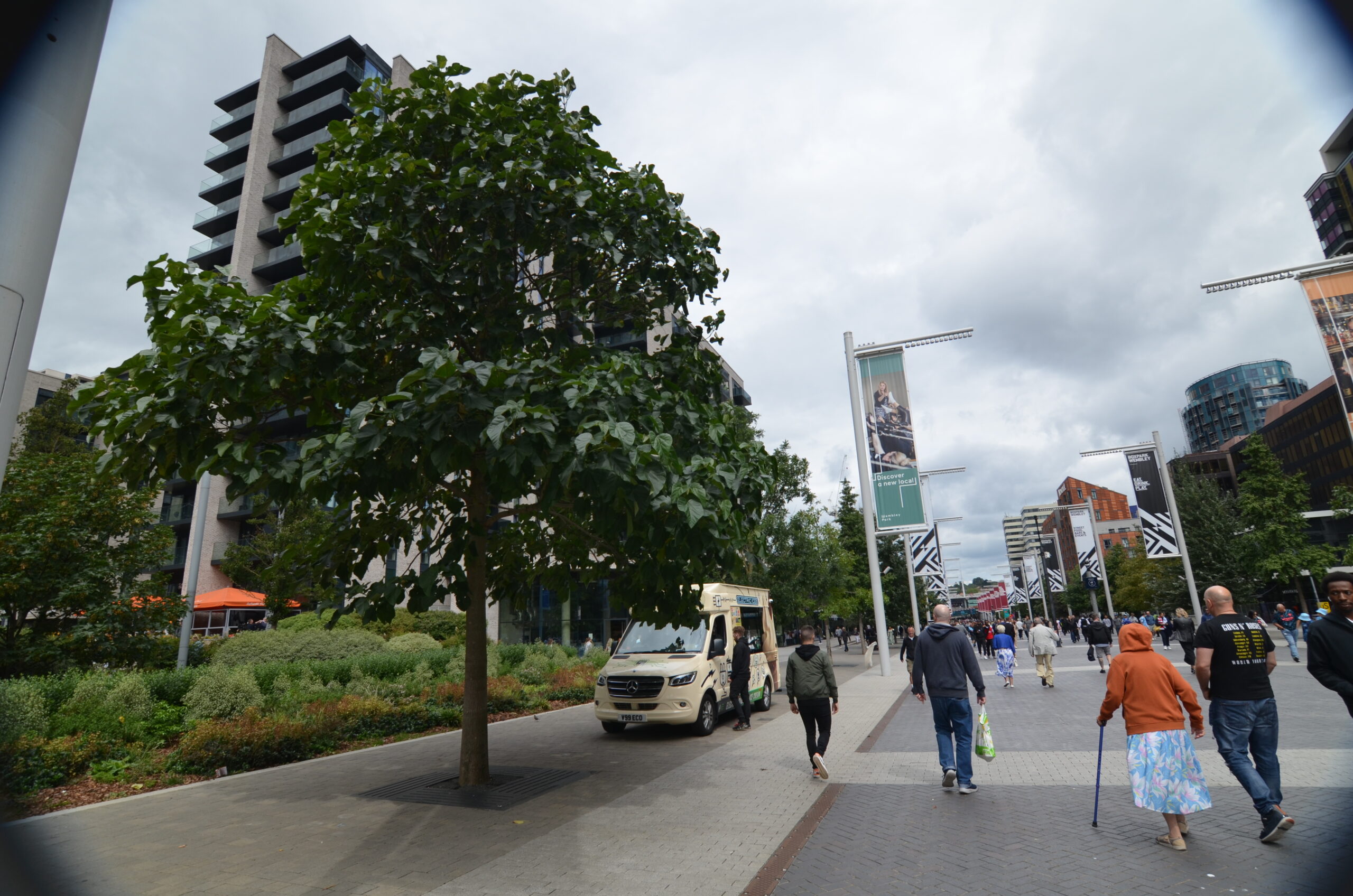
The trees are colloquially referred to as the “Avenue of Champions,” and each species is arranged in order of its longitudinal origin. In addition to adding to the diversity and mitigating monoculture, Gross Max, the landscape architect, wanted to create an array of different colors that would burst in the autumn season. The trees from the station to the stadium reflect the temperate zones of the Northern Hemisphere. Starting west (being the station end) to east, they are arranged in order of the longitude of their natural habitat. The latitude of each tree is engraved into the tree grill. The tree species mirror each other along the avenue walkway and are flourishing in the same soil volume under the London weather conditions.
For more DeepRoot Silva Cell projects in the U.K., check out our case studies here, here, and here.
